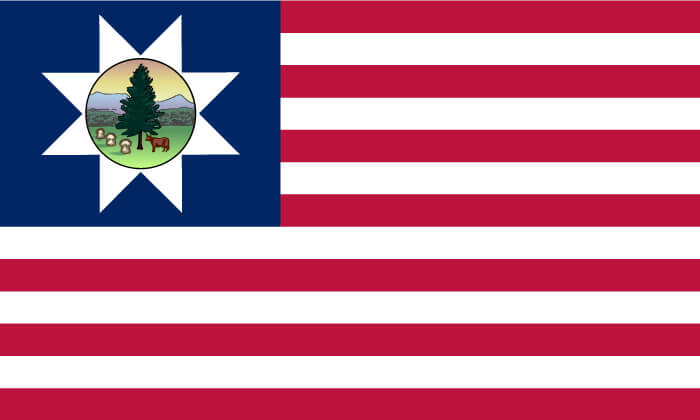Composition
The Vermont flag features a field of blue charged with the state coat of arms, centered.

Vermont has had three official iterations of its state flag. The first two closely resembled the flag of the United States, with alternating red and white stripes and blue canton.
This proved confusing, especially due to the U.S. flag changing frequently as new states were added. For the third version, they opted for the reliable design of their coat of arms on a field of blue.
This version of the flag was officially adopted June 1, 1923.
The Vermont flag features a field of blue charged with the state coat of arms, centered.

New England
Note: Pine boughs were worn at the battle of Plattsburgh during the War of 1812.
forests
agricultural tradition
dairy farming
Vermont, Camel’s Hump and Mount Mansfield
Note: “Verd Mont” translates to Green Mountain.
flourishing wildlife
personal liberty, welfare of the common good
First seen in 1807 on Vermont bank notes, the coat of arms wasn’t formalized and standardized until 1840.

The Vermont flag features a field of deep blue.
Although not specified in Vermont statutes, the flag is typically produced with a 3:5 proportion.


An unofficial flag, representing the Green Mountain Boys, a Vermont militia led by Ethan Allen.

The first official flag mimics the U.S. flag, but with 17 stars and 17 stripes (a change they expected the U.S. flag to adopt). Vermont is inscribed on the first red stripe.

The flag changed to 13 stripes (again to match the U.S. flag) and within the canton the coat of arms is placed within an 8-pointed star. Sometimes a 5-pointed star was used.

The current flag of Vermont, no longer matching the U.S. flag.